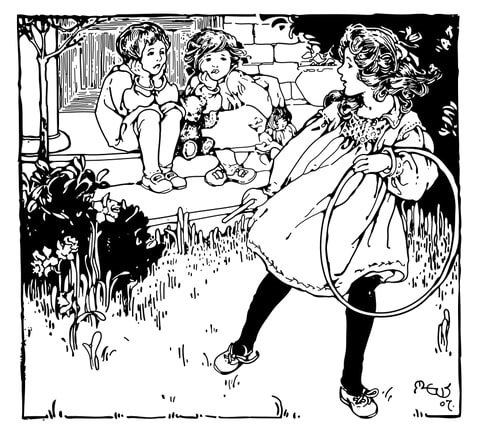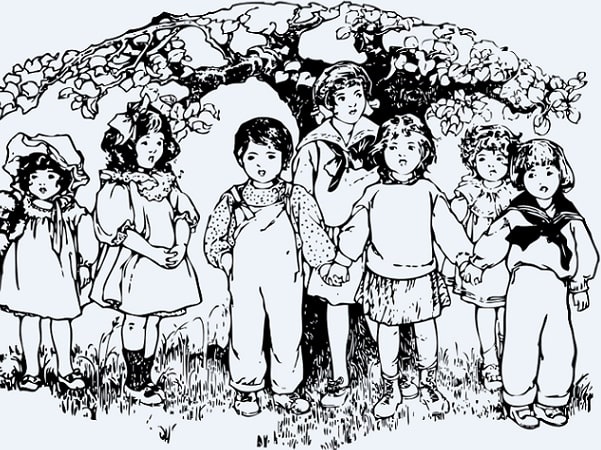Introduction: In this article, Jessica Edwards continues her series exploring the pastimes and toys our ancestors enjoyed when they were children, focusing on games that start with the letter “A.” Jessica has had a lifelong interest in her family’s history – especially on her father’s side, which goes back to the first settlers in Pennsylvania, Jamestown and New England – and has documented and added more than 21,000 people to her family tree!
In examining children’s pastimes and toys from 1700 to 1950, we’re looking at a time when children worked more and had less free time than children today. By studying how they played, we can learn about an aspect of our ancestors’ lives not often dealt with in genealogy, and help bring those names and dates on the family tree back to life.

Annie Over: This game needs two teams, a ball, and some kind of barrier, like a log or a table, or possibly a low wall. Teams stand on either side of the barrier and the team with the ball is “it.” They yell “Annie!” and throw the ball to a member of the opposing team. If the child catches the ball, then that team is “it.” When he or she catches the ball, the teams have to change sides fast. The one who caught the ball tries to hit an opponent with it. If he or she succeeds, the child who was hit switches teams while the teams are running to change sides. The goal is to keep adding the other team’s players until you eliminate the other team completely. This game is similar to one called “Anthony-I-Over” or “Anti-I-Over.”
Apple Ball: Children poke strong sticks into rotten apples and fling them as far as possible, and the one thrown the farthest is the winner.
Archery: Archery is the practicing of firing an arrow from a bow. Archers take turns shooting at a target (it might be a target drawn on a tree, a particular branch, another physical object, etc.) from various locations. The first archer to hit the target forces the next one to shoot from the same location they shot from. The next archer then has to hit the target closer to the center than the previous archer did. This all came about because throughout history the bow and arrow has been used as a method of hunting and as a weapon in combat. Boys and men had to be trained to do well at it, as their lives and that of their family and friends may have depended on their ability to hit what they were aiming at. In recent times archery has become more commonly used as a competitive sport and for recreation, and it was introduced to the Olympics in 1900. Archery has been around for most of human existence. It is estimated that it may be between 10,000 and 15,000 years old.
Are You There, Moriarty: This game became well-known with the popularity of Professor Moriarty as the arch-nemesis of Sherlock Holmes in the classic stories written by Sir Arthur Conan Doyle during the Victorian era. It is a two-player game where the players blindfold each other, hold one hand each and lie on their stomachs. In the other hand, they hold a rolled-up newspaper and call out, “Are you there, Moriarty?” The other player replies, “Yes!” or “Yes sir, I am here!” Player 1 then has to try and blindly hit Player 2 with the newspaper, judging where he or she is only by the sound of their voice. Player 2 can try to dodge the blow, but their knees must remain in place at all times. There is a small amount of strategy to the game: in order to avoid being hit, each player may roll to one side or the other. The decision of which direction to roll, or whether to roll at all often determines whether the player is hit by his opponent. A player who can quickly roll out of the way after speaking will have a definite advantage in the game.
Up next: Children’s Pastimes and Toys (the Letter ‘B’)
Related Articles:
